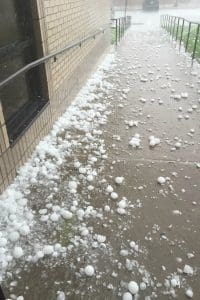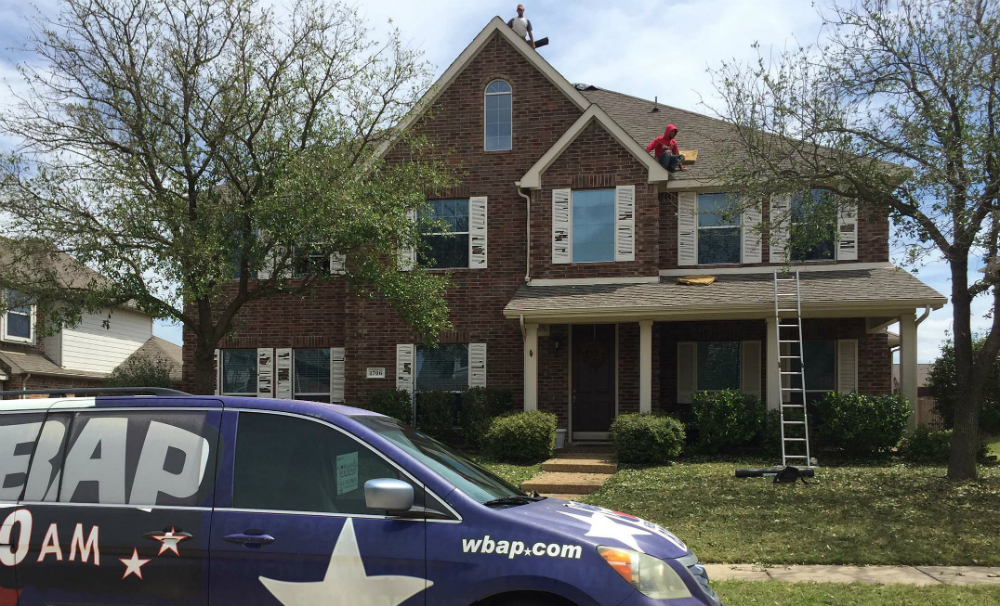On April 11, 2016, the North Texas area was hit by a record-setting hailstorm that caused an estimated $300 million in damage. The community of Wylie, TX suffered some of the most significant damage, with 80 percent of the city’s homes damaged. The Wylie Independent School District sustained damage to all 20 campuses as well as its entire bus fleet.
City officials began rebuilding immediately and school was only cancelled for one day. For many, including safety personnel, the storm served as a reminder about what it takes to be prepared.
Our district has a comprehensive emergency management plan. We practice and drill to make sure everyone knows what to do when disaster strikes. Our message is simple and we communicate openly and honestly with everyone. I was prepared.
I have an amazing superintendent who worked non-stop to ensure the safety of staff and students. From our custodians to our board president, everyone was determined to bring normalcy back to our families as quickly as possible. I was prepared.
Neighbors (and strangers) took care of neighbors, often helping others before tending to themselves. Meals were delivered. Tools were shared. Prayers were offered. I was prepared.
I’ve attended numerous workshops on crisis communications, learning from the best of you. I am a member of professional safety and communications organizations and many of you called, texted or emailed me with offers of help, support and prayers in our time of crisis. I was prepared.

Image via Wylie ISD
Except I wasn’t…
In our role, we are often the first to respond to a crisis and the last to leave. It turns out that for the past 20 years I have been “lucky.”
No matter what I faced at work, I could go home and, for at least a little while, remove myself from the situation to gather my thoughts, create a plan or call a colleague.
But that changed one April evening. The thing about disasters is that they don’t care what you’re doing. It doesn’t matter to a hail storm that you’re at a board meeting while your spouse and kids are home. I knew from what I was seeing and hearing that this was not a normal hail storm— even for Texas. I watched from my office as cars in our parking lot were pummeled by softball-sized hail.
We held a quick emergency planning meeting and then I knew I had to get home. I was able to clear enough glass from my (later totaled) car to drive. Going down my street was like entering a war zone. Every home was damaged. Curtains and blinds flapped freely through shattered windows. Ladders and tarps were already out.
[promo_content slug=”ian-m-halperin-csc-promo”]
My family was lucky. The windows we lost were on the ground floor and over tile. My neighbors and family had already boarded them up and started cleaning. I had just enough time to hug my family and then I was back out with the superintendent to assess the damage and formulate a plan.
And when I returned home after 1:00 a.m, with the sounds of hammers and circular saws still filling the air, I knew that despite all my experience and training I wasn’t prepared. This was the crisis that followed me home. It was my crisis.
Handling Stress in The Midst of A Crisis
That following day I conducted media interviews from my lawn. News crews were set up on my street. I alternated between calls from my insurance company and the media.
There is a name for this: dual trauma. The US Department of Health and Human Services (USDHHS) describes dual trauma as “the collective experience of occupational exposure as a first responder in one’s own community as well as having personal exposure as a citizen of the same (or a neighboring) community whose life has been interrupted by a trauma event such as a natural disaster.”
We focus our energy and emotion on others. It’s just what we do. But I encourage you to take time for yourself during, and after, a major crisis. The USDHHS offers these tips for minimizing stress after a crisis:
- Consider participating in organized debriefings or critiques.
- Reconnect with your family.
- Have a physical checkup.
- Continue normal leisure activities and stay involved with your hobbies and interests.
- Consider stress management techniques such as meditation, acupuncture and massage therapy.
- Draw upon your spirituality and personal beliefs. Take advantage of faith-based counselors and workplace counseling units.
- Avoid using alcohol, tobacco, or drugs to cope with stress. Seek professional substance abuse treatment if necessary.
- Use Employee Assistance Programs if you need to.
We were fortunate. No lives lost, no major injuries. We missed just one day of classes and by then we were already rebuilding both at our schools and at my home.
Being prepared means more than just knowing what to. It includes making sure you (and those around you) have the time to process what has occurred. I hope no one else has to go through a crisis like this. But if you do, please take care of yourself.
Ian M. Halperin serves as the Executive Director of Communications and Community Relations for the Wylie Independent School District. His primary responsibility is ensuring the district’s message is communicated efficiently and accurately, be it on the internet, in the mass media or in district publications. His office also coordinates marketing, special events and district safety and security. He has 20 years of experience in public school PR and has been honored numerous times by state and national associations for his communications programs. Read the full description of his session at Campus Safety Conference East here.













